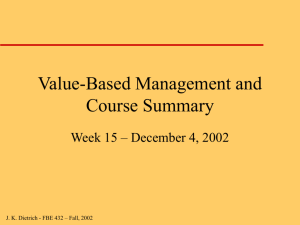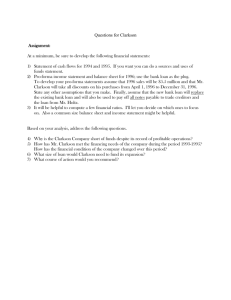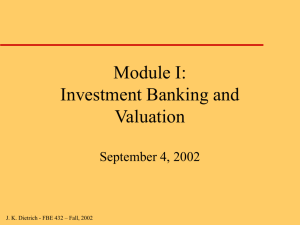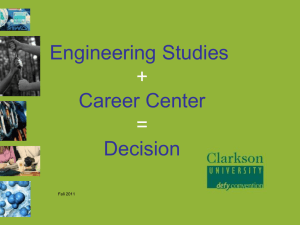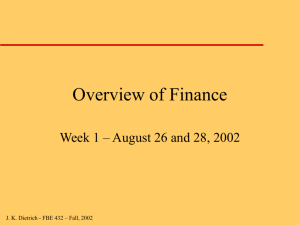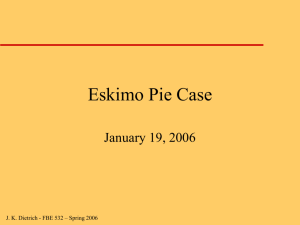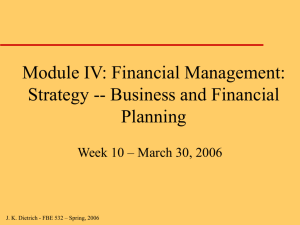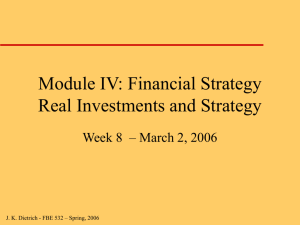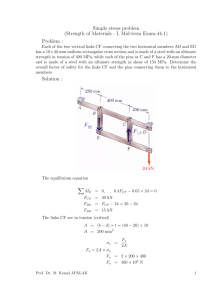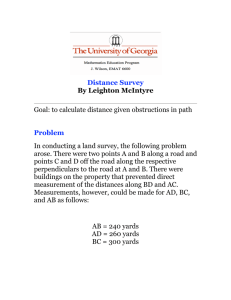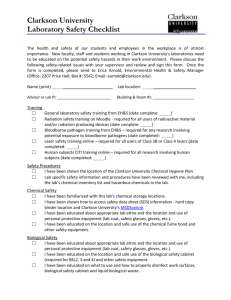Class 2 - marshall inside . usc .edu
advertisement
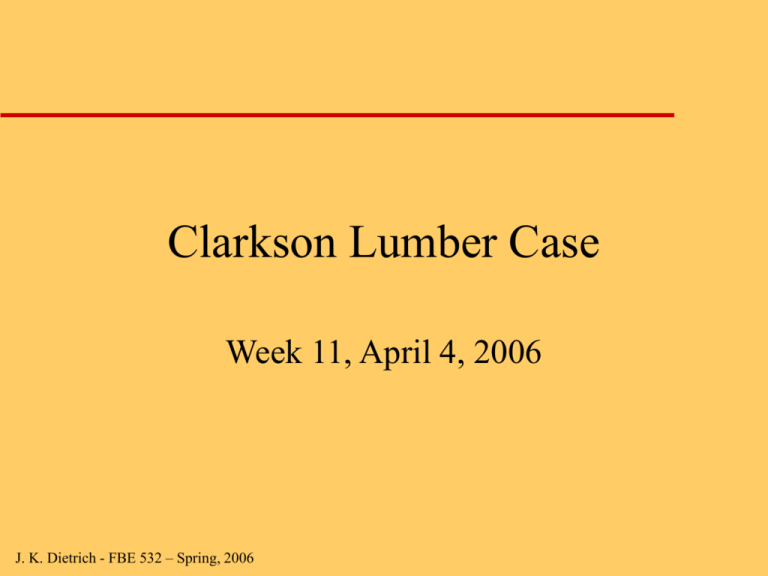
Clarkson Lumber Case Week 11, April 4, 2006 J. K. Dietrich - FBE 532 – Spring, 2006 Clarkson Lumber Performance ROE increases from 1993 to 1995 from 11.9% to 17.15% – Good? Benchmarks? – Causes? Margin constant about 3.3 to 3.4% Turnover falling from 3.2 to 2.8 Difference is leverage, up from 1.82 to 3.64, I.e. doubled (note net worth) J. K. Dietrich - FBE 532 – Spring, 2006 Look at Cash Flows for Clarkson Piece together from ‘93 to ‘96 financials: ‘93/96-I Cash from operations $ 210 - Capital spending 151 - Increase in net W/C 567 - Cash to Holtz 100 Total Cash needed $ 608 Where has cash come from? Total liabilities up $ 758,000 J. K. Dietrich - FBE 532 – Spring, 2006 Analysis of Working Capital Days in accounts receivable up from 38 to 49 days Inventory turnover down from 6.5 to 5.8 Accounts payable days increase from 35 to 53 days, and missing 2% discounts To receive 2% discount, pay in ten days, means with 1996 sales estimated at $5.5 million is 10/360 x $ 5.5 = $ 115,000 J. K. Dietrich - FBE 532 – Spring, 2006 Projected 1996 Balance Sheet Cash AR Inv CA NP Tot Ass NP-Bk TP AP AccExp TermLoan CL Tloam Holtz New Loan Tliab NW J. K. Dietrich - FBE 532 – Spring, 2006 10 738 708 1456 380 1836 399 0 115 70 20 604 80 0 433 1117 719 Reliance on Creditors Note costs of losing 2% discount from not paying within 30 days Paying accounts receivable within 10 days implies increased profit of 2% times costs of goods or $82,000 for only or $487,000 $115,000 or $372,000 in financing Why does Clarkson need so much? – Income is not cash – Growth is fast J. K. Dietrich - FBE 532 – Spring, 2006 Financing Growth Sustainable growth model suggests that with current characteristics (T, L, p, d) Clarkson can only grow 13 to 14% 1996 growth forecasted at 22% Last two years’ growth 24% Required equity at end of 1996 (about $720,000) to leverage at 1995 level requires about $265,000 new equity, more that expected profits of about $90,000 J. K. Dietrich - FBE 532 – Spring, 2006 Mr. Clarkson’s Dilemma Growth – Inventories and accounts receivables eat up cash – Payables are expensive – Profits not high enough to finance growth Options facing Mr. Clarkson – Slower growth – Higher leverage and financial risk – Outside investors and dilution of control J. K. Dietrich - FBE 532 – Spring, 2006
